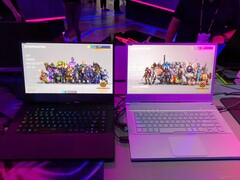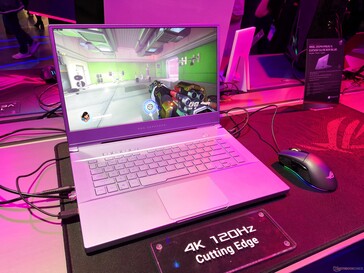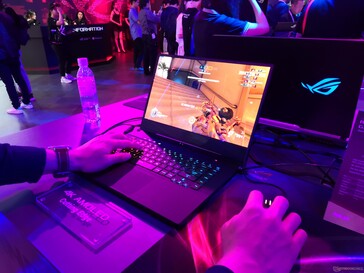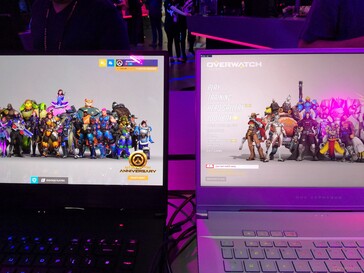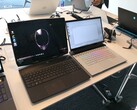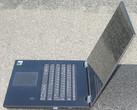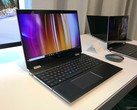We have been seeing a steady stream of laptop OEMs opting for OLED panels in their offerings. Laptops such as the Alienware m15 R2, Gigabyte Aero 15, Dell XPS 15 7590, and Lenovo Yoga C730 among others offer OLED panel options alongside the regular IPS ones. Asus, however, does not seem to be fully convinced on OLED yet. The company is toying around with the idea of offering OLED options on its gaming laptops but feels there are still some issues to be resolved.
Asus launched the Zephyrus S GX502 last month with a 240 Hz Pantone-validated IPS-type panel. At the ongoing Computex trade show, Asus showed a gaming demo on two GX502 laptops — one of them sported a 4K 120 Hz IPS matte panel and the other had a 4K AMOLED glossy panel (this is just for demo purposes and not currently being offered). The colors appeared more vivid on the AMOLED panel for sure, but Asus says they still have concerns about burn-in effects and much shorter lifespan of OLED panels. Asus also made a point about problems with color accuracy over long periods of usage. The company said they look forward to incorporating OLED panels in gaming laptops as soon as these concerns are resolved.
Screen burn-in has always been a contentious issue with OLED panels even though there are differing opinions and not everyone experiences it with modern displays. OLEDs are becoming increasingly popular on smartphones, but PC displays generally have many static elements such as toolbars, HUDs, tickers, etc. on most of the time, which increases the probability of image retention or burn-in. Also, while OLEDs can have ultra-fast response times (as low as 0.1ms) and can theoretically attain faster refresh rates, concerns such as motion blur due to persistence (sample-and-hold) still need to be addressed for a proper gaming experience.
Source(s)
Computex 2019


